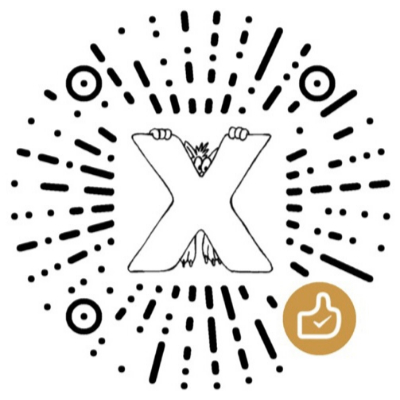In intimate relationships, giving emotional identification to your partner is crucial. The scope of identity is far more than emotional support, but also includes understanding and acceptance of the partner's personality traits. Their personality traits profoundly affect their daily interactions. Understanding and respecting each other's personalities plays an important role in stabilizing relationships.
If you are not sure about your partner's MBTI personality type, you can invite them to try the free MBTI personality test provided by PsycTest Quiz official website (psychtest.cn). Scientific assessments will help you quickly identify it.
What is personality identity?
Character identity is not the same as approval or praise, although they can have a positive effect. The core of identity is 'understanding' and 'acceptance'. When your partner is in poor condition and conflicts occur frequently, identification can make the other party feel that you accept their complete personality, rather than just recognize the easy part to get along with. For INFPs (mediators), the understanding of partners is particularly critical because their inner world is rich and delicate.
The following content revolves around the typical characteristics of the Mediator (INFP) personality and tells you how to give them sincere recognition in life.
The core traits and identification methods of the mediator (INFP) personality
1. Rich and creative imagination
INFPs often start with 'What if...what would happen' to express their rich inner fantasies and various whimsical ideas. Imagination is not only a pastime for them, but also a way to stimulate motivation and explore possibilities.
Many people think that INFP's 'imagination' has no practical meaning and even wastes time. You must understand that every thought of them comes from sincere hope and inner inspiration. Participating in their imaginary dialogue is like opening a window to make them feel respected and valued.
The key to identification is not to agree with their views, but to encourage them to continue talking with a curiosity and open attitude, such as 'It's so interesting, can you say more?' Avoid criticizing or denying it from the beginning. You can express your opinions when they need feedback, but initially, it is mainly listening. In this way for a long time, INFP will feel your deep recognition of their personality.
When their creativity points to positive goals, proper affirmation and encouragement can greatly enhance their motivation. Remember, the focus is to support the other person to work hard for their own happiness, not what you think is the 'right' path.
2. Interest transfers quickly, easily distracted but strong adaptability
INFP's curiosity and rich imagination make them often switch between different interests and difficult to focus on a single task for a long time. They may give up on ongoing plans halfway through, an act that often makes them feel frustrated and self-blame.
As a partner, you should help them maintain a positive self-awareness with caution and empathy when facing these personality weaknesses. Remind them that this 'unsustainable' habit is accompanied by strong adaptability and desire to explore, which is also a valuable personality wealth.
When they change their interests or fail to complete the task on time, avoid using criticism to increase the burden. On the contrary, maintain a peaceful and rational attitude, encourage them to enjoy the freshness and fun in life, and show your understanding and acceptance of this rhythm of life. For example, you can say:
It doesn't matter, let's face it together and everything will be fine.
This positive and inclusive communication is the lubricant for INFP to build confidence.
3. Pursuing the fun and freshness of life
INFP sees “fun and enjoyment of life” as one of the cores of a relationship, even exceeding appearance attraction, intellectual matching or spiritual resonance. When they are with you, they long to feel the joy of novelty and exploration at times.
You can take the initiative to create small surprises in your daily life: such as not telling the dinner location in advance, bringing back a small gift, or giving them new hobby ingredients and food. Even some small changes can inspire INFP's curiosity and creativity.
More importantly, when the INFP suddenly proposes to do something, learn to say 'ok', and use your actions to support their enthusiasm. Your recognition and participation will bring them great satisfaction.
Conclusion: Listen to your partner’s inner voice with understanding
Identifying the personality of an INFP partner is a respect and understanding of his inner world. You don’t have to be perfect, nor do you need to master all the answers. As long as you are willing to let go of prejudice, listen attentively, and accompany with your patience, you can build deep trust and love.
Character identity is different from simple comfort of emotions, but is based on a comprehensive acceptance of the partner's personality traits. Even if the two have conflicts in their personalities, the attitude of identity can still drive the relationship toward harmony. For INFP, the understanding of partners is a heart-warming agent that helps them better understand themselves and strengthen self-confidence.
If you want to have a deeper understanding of the detailed analysis of MBTI personality types and mediators (INFPs), please visit PsycTest Quiz's free MBTI personality test . Our platform provides authoritative and rich 16-type personality testing resources to help you better understand yourself and your partner.
At the same time, if you want to obtain a higher-level and personalized personality interpretation, you can subscribe to our MBTI advanced personality profile and enjoy in-depth insights brought by a professional psychology perspective.
On the official website of PsycTest Quiz (psychtest.cn), you can also find more about MBTI personality tests, Myers-Briggs personality test free version, personality tests, personality tests and other related content to help you embark on a new journey of self and partner understanding.
Related Recommended Reading
PsycTest Quiz – Your professional personality exploration partner.
Link to this article: https://m.psyctest.cn/article/yQGL7Odj/
If the original article is reprinted, please indicate the author and the source in the form of this link.

